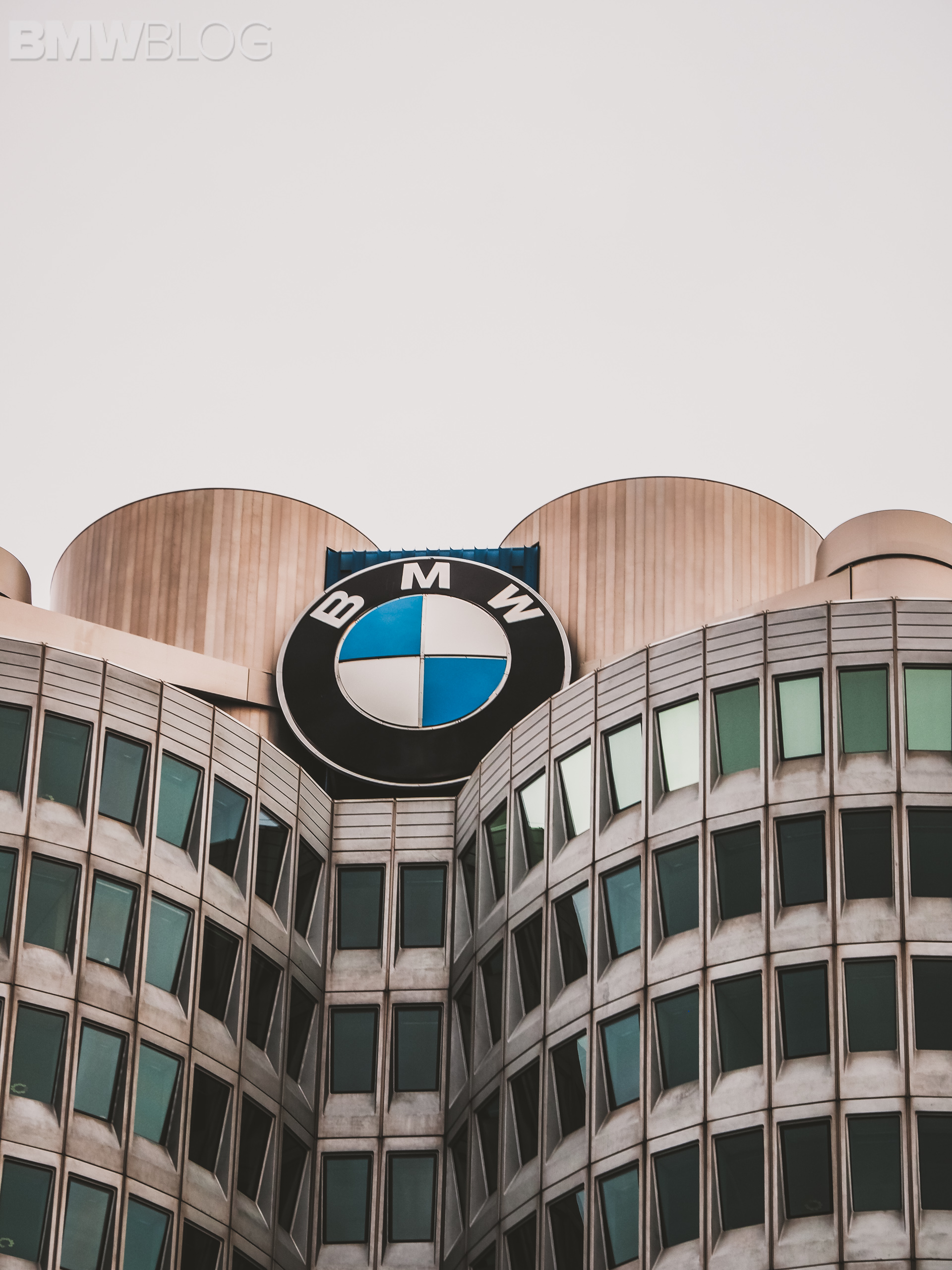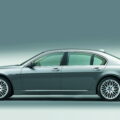The widely known and highly popular “Freude am Fahren” slogan of BMW celebrates the 55th anniversary in 2020, but its roots can be traced even further back in the history of the brand.
Say it “Freude am Fahren” in German or “Sheer Driving Pleasure” in English or even “Placerea de a conduce” in Romanian, you Bimmer fans all love and cherish this resounding and powerful slogan that perfectly highlights the essence of BMW. The Bavarian carmaker is instantly associated with the pure joy and pleasure of driving. In a way, BMW is the most Italian of the German automotive brands, igniting an intense passion in the souls of fans and drivers across the world.
1920 – 1930: Early preparations for a competent media and advertising strategy
Throughout its 104-year history, BMW underwent some major transformations and crisis periods. After each of the challenges, the brand emerged more powerful than ever, being able to reinvent itself amid the adverse downturns. After World War I, the 1916-born Bavarian company stopped producing aircraft engines and instead began assembling different component and aggregates such as brake systems for railroad cars and entire engine units for commercial vehicles.
BMW also started the production of motorbikes beginning with 1923, with the flat-twin boxer R32 model being the first motorcycle to wear the blue-white roundel. From 1929, BMW had consolidated its status as a global automobile manufacturer, with the Dixi 3/15 PS DA-1 being the first BMW car to be produced.
To thoroughly prepare for car production, BMW established the “Central Advertising Bureau”, which brought a significant improvement in the quality of communication, as well as new promotional tools. In addition, from March 1930 up to 1941, the “BMW Blätter” (“BMW Pages”) illustrated lifestyle magazine that was previously reserved to dealerships was made available to BMW customers free of charge.
Last, but not least, in December 1929, the famous photo of the two propeller aircrafts with the BMW Roundel created by the movement of the propellers, sketched by artist Henry Ehlers, was published in the first issue of the “BMW Flugmotoren-Nachrichten”. This artist’s photo also ignited the myth which incorrectly stated that the BMW roundel symbolizes an aircraft propeller in motion, with the white blades superimposed over the blue sky.
In fact, the BMW logo highlights the white-blue flag of the Bavarian State, albeit presented in the inverse blue-white sequence. The reasoning behind this inverted order is that, due to legislation in force in the early times of the brand, it was not allowed to use the official colors of the Bavarian region in the exact order and composition for logotypes and other means of advertising.
“The pleasure of driving”: first signs of the iconic tagline as of 1936
After the first BMW Dixi 3/15 PS DA-1 vehicle was manufactured in 1929, the presence of the Bavarians in the automotive industry and market gained further traction, as the vehicle portfolio was diversified year by year. 1936 saw the introduction of two special models which really gave birth to the tagline “The pleasure of driving”, also emphasizing 6-cylinder powerplant so synonymous with BMW: the sports legend BMW 328 (2.0-liter displacement, 6-cylinder architecture and 80 hp engine) and the refined BMW 326 (with the same 6-cylinder engine, but developing 50 hp). The driving experience of a BMW model becomes a valuable attribute of the brand.
The BMW 326 Cabriolet appears in a printed advertisement from the launch year with the next description: “A wonderful experience … it’s a car ride, with the new big BMW, spacious with 5 seats and 4 doors. A sense of tranquility and safety over expectations is transmitted from the car to you and gives you a double pleasure to drive.”.
This is one of the first moments in the history of brand communication when the experience of driving a BMW is described with the phrase “driving pleasure”. It creates a bond that would be permanently and constantly strengthened, both through technology and communication.
“The pleasure of driving” again in spotlight in the ’60s decade
After a troublesome period, BMW launched the Neue Klasse vehicle family at the IAA Frankfurt in September 1961. With a scheduled market introduction in 1962, the New Class models were the result of a strategic brand reorientation towards the premium segment.
Comprising the 1500, 1800 and 2000 variants, the new BMW high-class sedans premiered a new corporate design identity with its traditional shark nose and the slim kidney of the radiator grille. In addition to being extremely elegant and practical, the key attribute of the BMW New Class generation of models was the sheer driving performance and dynamics.
In 1964, driving an 1800 Ti, Hubert Hahne won 14 of the 16 races of the German Circuit Championship. Two years later, this time at the command of a BMW 2000 Ti, the same Hahne entered history after, for the first time, descending under the 10-minute barrier on the Nürburgring in a touring car.
With the car always at its limit, the stopwatch stopped at 9 minutes and 58 seconds. Even if it was an opening race for the German Formula 1 Grand Prix, the press would talk the next day only about Hubert Hahne and his spectacular record. The sporting image of the brand was redefined.
In 1964, the campaign for the New Class models used a key message similar to the one used more than 30 years ago for the BMW 326. With the title “The Joy of a Car – The Pleasure to Drive,” customers were made aware of the power output, the 0-100 km/h acceleration time and the price of each model of the BMW New Class.
In addition, the following promise was offered: “Driving is fun again. Five comfortable seats – safely driven. Surrounded by luxury – take care of yourself comfortably.”
The results of a market research ordered by BMW to the Bernt Spiegel specialized company were quite stunning. The brand with the blue-white roundel remained associated with the fascinating, sporty 328 and 326 launched in 1936 than with the more luxury-oriented 501 – 502 – 503 – 507 models that followed in the early ’50s.
This was a decisive pivotal point in the decision to put a greater emphasis on the values of sportiness, driving dynamics and technology in the development process and advertising of new models.
Based on the outcome of the market study, BMW and the Bernt Spiegel company were able to identify an available, free slot in the market, which meant increased opportunity to add further sporty models to the lineup. For the first time in history, BMW and Bernt Spiegel were applying the precepts of what was to become better known as the “market niche theory”.
Thus, BMW started to add some sensational and attractive 2-door sedan proposition which made history for the brand. Denoted by “02” suffix, the 1502, 1602, 1802 and 2002 versions remained deeply rooted in the hearts of excited customers and fans. At the same time, together with a new advertising agency, entitled Gramm & Gery, BMW is starting to shape a new, crystal clear brand image focused on driving sportiness. Since 1965, the brand has officially used the slogan “Freude am Fahren”.
Until 1972, the quintessential slogan was also used together with its alternate version “Aus Freude am Fahren” (translated to English as “For the pleasure of driving”). However, this second tagline did not always accompany the media communication for new models. Since that year, the company has adopted the slogan in the form known today and has used it consistently throughout the product communication. Also in 1972, BMW focused on a developing a worldwide presence in key international markets, thus implementing a strategy the expansion of the brand outside Germany.
A coherent global image becomes very important, so that the brand’s iconic slogan receives a series of firmly established translations. For the UK and English-speaking markets, “Sheer Driving Pleasure” is used to denote “Freude am Fahren”, while in France the tagline “Le plaisir de conduire” is chosen.
In 1973, BMW adapts the slogan for the BMW Motorrad, with the English translation being “Sheer Riding Pleasure”. In 1975, BMW officially took over the import business from the United States. For the presence of the brand on the New Continent, another interpretation of the slogan is chosen: “The Ultimate Driving Machine”, which is equally popular and widely recognized by the BMW fan community.
Starting with 1994, BMW officially enters the Romania market as authorized importer for the Bavarian models. Here, “Freude am Fahren” was adapted to “Placerea de a conduce”, which basically denotes “The pleasure to drive”, thus being fairly similar to French version of the slogan.
I am mostly moved by the advertising material with the Mercedes-Benz Actros trailer transporting BMW 5 Series Sedan and Touring vehicles of the E39 model generation. I find it particularly amusing, but true and politically correct, as it shows the great contrast between the two big automotive rivals, with BMW being the supreme athlete, while Mercedes-Benz is focused on high-end riding comfort.




















































